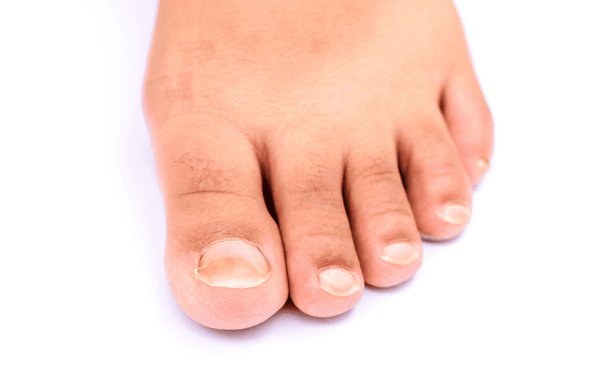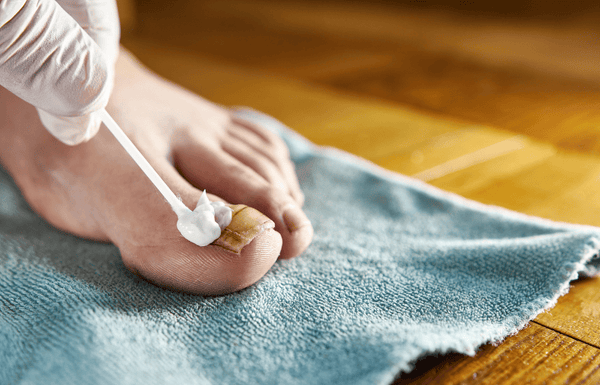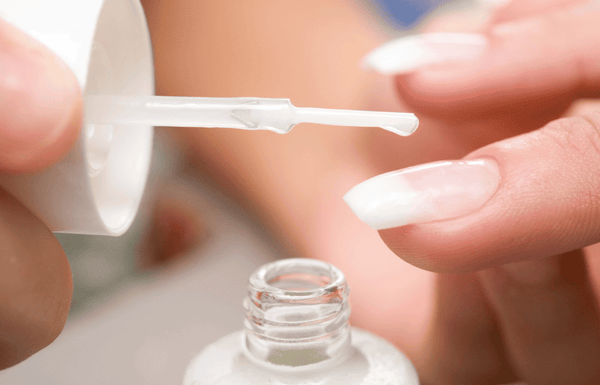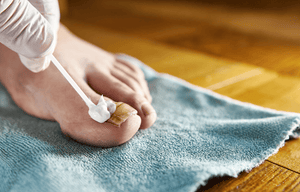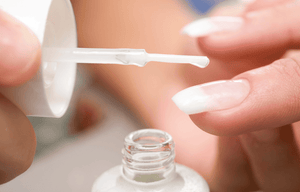
Fungal infections of the feet, particularly athlete's foot and toenail fungus, are far more common and contagious than many people realize. And here's a less comfortable truth: you might unknowingly be spreading it right within the confines of your own home. It's easy to dismiss a mild case, but fungal spores are notoriously resilient and can linger on surfaces, just waiting for the perfect opportunity to infect new hosts.
Read on to learn more about foot infection by fungi, common household habits that help it spread, and fungus prevention tips that actually work to protect your feet and your family.
What Is Foot Fungus and How Does It Spread?
When we talk about foot fungus, we're primarily referring to two common types: athlete’s foot and toenail fungus.
Athlete’s foot is a superficial skin infection caused by dermatophytes, fungi that thrive in warm, moist environments. It typically affects the skin between the toes, the soles of the feet, and sometimes the sides. Symptoms include itching, burning, redness, scaling, peeling, and sometimes blisters.
Toenail fungus occurs when fungi invade the nail bed, often starting with a small white or yellow spot under the tip of the nail. As it progresses, the nail can thicken, discolor, become brittle, crumble, and even emit a foul odor. Toenail fungus is notoriously difficult to treat and can even be a source of constant reinfection for athlete's foot.
Both types of fungal infections spread through direct contact with fungal spores that thrive in environments that are warm, moist, and dark, aka inside shoes, socks, and damp areas like bathrooms.
These spores are not just confined to your feet; they detach and settle on surfaces you frequently interact with, setting the stage for spread and reinfection. Common surfaces and items that act as transmission vectors for foot fungus spores include:
- Bathroom floors
- Shower stalls
- Towels
- Shared shoes or socks
- Public areas
Are You Accidentally Spreading It at Home?
Many people who suffer from foot fungus might be inadvertently contributing to its spread within their own homes, putting themselves and other household members at risk. Here are some signs you might be unknowingly spreading the infection:
Persistent or recurring foot fungus: If your athlete's foot or toenail fungus keeps coming back despite treatment, it's a strong indicator that you're being reinfected, possibly from your home environment.
Other family members developing foot fungus: If your spouse, children, or roommates suddenly start experiencing similar symptoms, it’s highly probable the infection is circulating within the household.
The risk to family members or roommates is significant, especially if they have compromised immune systems, diabetes, or simply a genetic predisposition to fungal infections. What starts as a minor inconvenience for one person can quickly become a household problem.
Common household habits that significantly increase the risk of spreading foot infection include:
- Walking barefoot indoors
- Not disinfecting shared areas
- Using the same towel for feet and body
- Sharing personal items
- Neglecting shoe hygiene
Top 5 Prevention Tips That Actually Work Against Foot Fungus
1. Practice Good Foot Hygiene
This is the foundation of fungus prevention. Wash your feet daily with soap and water, paying special attention to the spaces between your toes. After washing, dry your feet completely, using a separate towel or a dedicated section of your towel, especially between the toes where moisture loves to linger. Pat, don't rub, to avoid skin irritation. If you are prone to athlete's foot or sweat excessively, consider using an over-the-counter antifungal powder or foot fungus spray in your shoes and on your feet daily. This helps to absorb moisture and create an unfavorable environment for fungi. Don't wear the same pair of shoes every day. Allow shoes to air out and dry completely for at least 24 hours between wears. This helps reduce moisture buildup and fungal growth.
2. Keep Communal Spaces Clean
Use a disinfectant spray or solution (like bleach or commercial fungicidal cleaner) on bathroom floors, shower mats, and inside the shower stall. Focus on areas where water pools or where bare feet frequently touch. Do this at least weekly, or more often if someone in the household has an active infection.
3. Disinfect Socks, Bath Mats, Towels & Shoes
Next, remember fungal spores can survive regular washing cycles, so wash socks, bath mats, and towels in hot water (at least 140°F / 60°C) with detergent. Add a cup of white vinegar to the wash cycle for extra effectiveness. For washable shoes like canvas sneakers, wash them in hot water and allow them to air dry completely. For non-washable shoes, spray the insides with an antifungal shoe spray or use antifungal powders regularly. You can also place shoes in direct sunlight for a few hours, since UV light helps kill fungi, or even put them in a freezer overnight. Placing cedar shoe trees inside shoes can help absorb moisture too.
4. Protect Feet in Shared Areas
Create a barrier between your feet and potentially contaminated surfaces. Always wear waterproof footwear when using communal bathrooms, showers, locker rooms, or pool areas. Extend this habit to your home bathroom, especially if someone in the household has a fungal infection. While tempting, walking barefoot, especially on carpets or hard floors in damp areas, can expose your feet to spores or spread them. Consider wearing lightweight, breathable slippers or socks at home, particularly if you have an active infection.
5. Don’t Share Personal Items
Emphasize that socks, shoes, towels, and nail clippers are strictly personal. Each person should have their own set of these items. If you must use shared nail clippers or other foot care tools, make sure they are thoroughly cleaned and disinfected after each use.
When to See a Doctor or Podiatrist
While these household tips to prevent foot fungus are effective, there are times when over-the-counter remedies and home prevention aren't enough.
Early intervention not only speeds up recovery but is also one of the best ways to avoid spreading toenail fungus and athlete's foot to others.
You should consult a doctor or podiatrist if you experience:
- Persistent itching, burning, or redness
- Cracked, bleeding, or severely painful skin
- Yellow, thickened, or crumbling nails (toenail fungus)
- Signs of secondary bacterial infection
- Diabetes or a compromised immune system
Fungus Prevention Is in Your Hands!
Prioritizing good foot hygiene, keeping communal spaces meticulously clean, protecting your feet in shared areas, and strictly avoiding the sharing of personal items are powerful strategies for fungus prevention.
By taking these steps, you not only safeguard your own foot health but also create a healthier, fungus-free environment for everyone in your household!
For the strongest topical treatment without a prescription, try Dr. AntiFungus Foot Spray today to attack foot fungus and stop it from coming back.